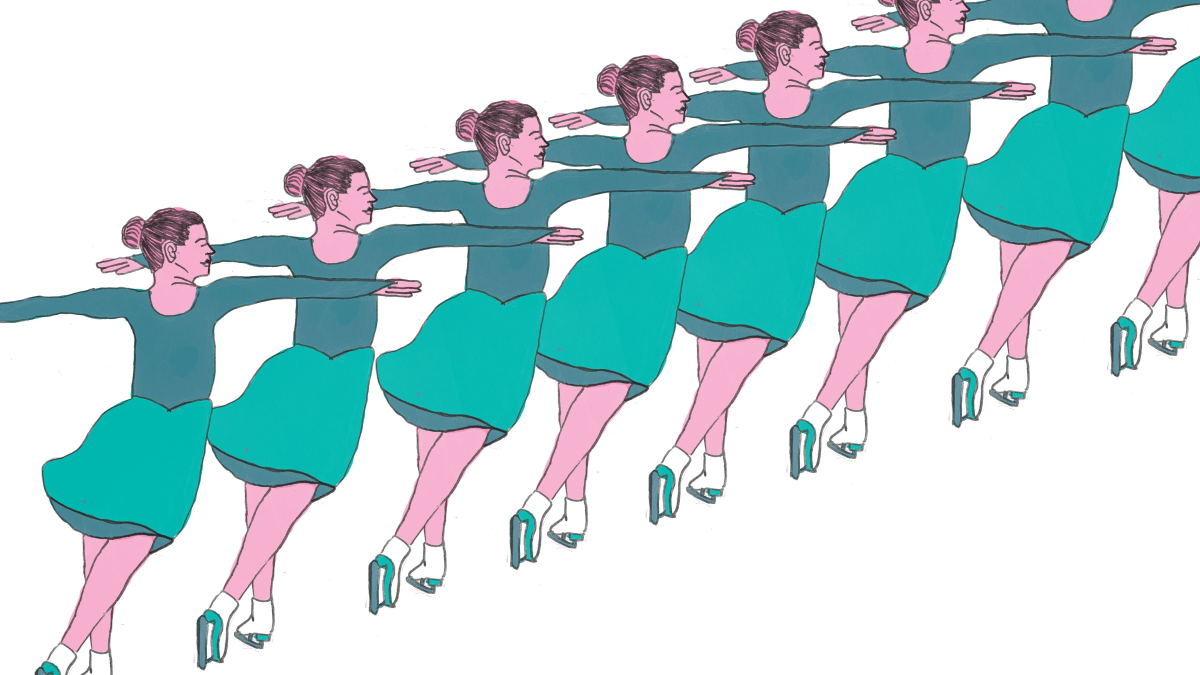At the moment, 14 of America's best figure skaters are in South Korea, competing against the rest of the world on the grandest stage in sports.
Meanwhile, the other 1,600 are going to be in Portland this week, competing against each other in a dilapidated sports arena.
Although considered one of the five official disciplines of figure skating, synchronized skating—in which teams of up to 24 skaters perform elaborately choreographed routines, often at breakneck speeds—is the only one not yet represented at the Olympics. It's hard to imagine why. If two people flinging each other around the ice is worthy of medals, shouldn't two dozen skaters doing it at the same time be 12 times as worthy?
Leslie Graham thinks so. The senior director of synchronized skating for U.S. Figure Skating understands why it's the odd sport out—it's still a fairly new form. Still, how much longer can the Olympic committee deny a spectacle that combines the grace of figure skating with the speed (and occasional bloodshed) of hockey?
Ahead of the U.S. championships happening in our backyard, we spoke to Graham to find out more about what the Olympics have been missing.

WW: Is it fair to say synchronized skating is the black sheep of the ice sports world?
Leslie Graham: It's definitely the youngest sheep. It's a fairly new discipline. Back in 1956, Dr. Richard Porter had this idea to put a bunch of cheerleaders, essentially, on the ice during intermission at a hockey game. So the first "precision team," as it was then called, was named the Hockettes. But we've only had a national championship since 1984, and we've only had a world championship for 18 years.
What's stopping it from becoming an Olympic sport?
I think the newness of it, and the sheer numbers. Teams can have up to 24 skaters on them. That's a lot of people the Olympics would have to accommodate. I think that's one of the biggest obstacles we have to overcome—just the sheer number of athletes who participate in the sport.
So what exactly goes into it?
Obviously, it's a team sport, and what makes it so special is these athletes are skating as one. They have great unity, but they're skating with a lot of speed and a lot of edgework. We say it's actually a combination of all the different disciplines. You have the jumps and spins of singles. You'll see the intricate footwork of an ice dancing team. You'll actually see, in our senior division, the lifts. So it's really a combination of all our different disciplines—just times 16 skaters.
Is synchronized skating popular in other countries?
It's definitely grown in popularity across the world. Russia has won the last two world championships. The Swedes, the Finns, the U.S. and Canada—those are the five countries who have embraced synchronized skating. I do think we're a leader in our discipline due to the sheer number of teams. We have over 620 registered synchronized skating teams in the U.S.

What's the most difficult move in synchronized skating?
I think the group lifts are pretty remarkable. You'll only see them in the senior division because of the risk involved. Think about it—in synchronized skating, if you have 16 people on the ice, that's 32 blades, that's a lot of fingers. It can be a dangerous sport. So those lifts are a pretty unique but exciting piece of a program.
Have you seen anything grisly like that happen during a routine?
Our hope is that everyone skates clean—that means everyone stays on their feet, basically. Unfortunately, things happen. Skaters are trained from a young age how to protect their fingers and hands, and get in a ball and roll away if you have to, so if there is a fall, it's the least disruptive it can be.
Who are the legendary figures in the sport?
The Haydenettes are a senior team out of Lexington, Mass. They are 25-time national champions. They've also won multiple world medals. I'd say they are the leaders in our country for this sport. They compete in the senior division, which is our top division, kind of the cream of the crop. I'd say they are favorites this year just because of their past competitive experiences.
Is there anything close to a Tonya Harding figure in the synchronized skating world?
Because of the nature of the sport, the athletes are part of a team, and the team is greater than the individual.
How important would it be if synchronized skating ever becomes an Olympic sport?
I think if it was to become an Olympic sport, we'd find a lot more skaters would be interested in it, because right now we don't have that opportunity. There's the opportunity if you're a singles skater or ice dancer or pairs skater that you can eventually compete at the top competition in our world. The World Championships are something our teams strive for, but there's not that carrot of the Olympics.
GO: The 2018 U.S. Synchronized Figure Skating Championships are at Veterans Memorial Coliseum, 300 N Winning Way, on Thursday-Saturday, Feb. 22-24. See rosequarter.com for schedule and ticket prices.

